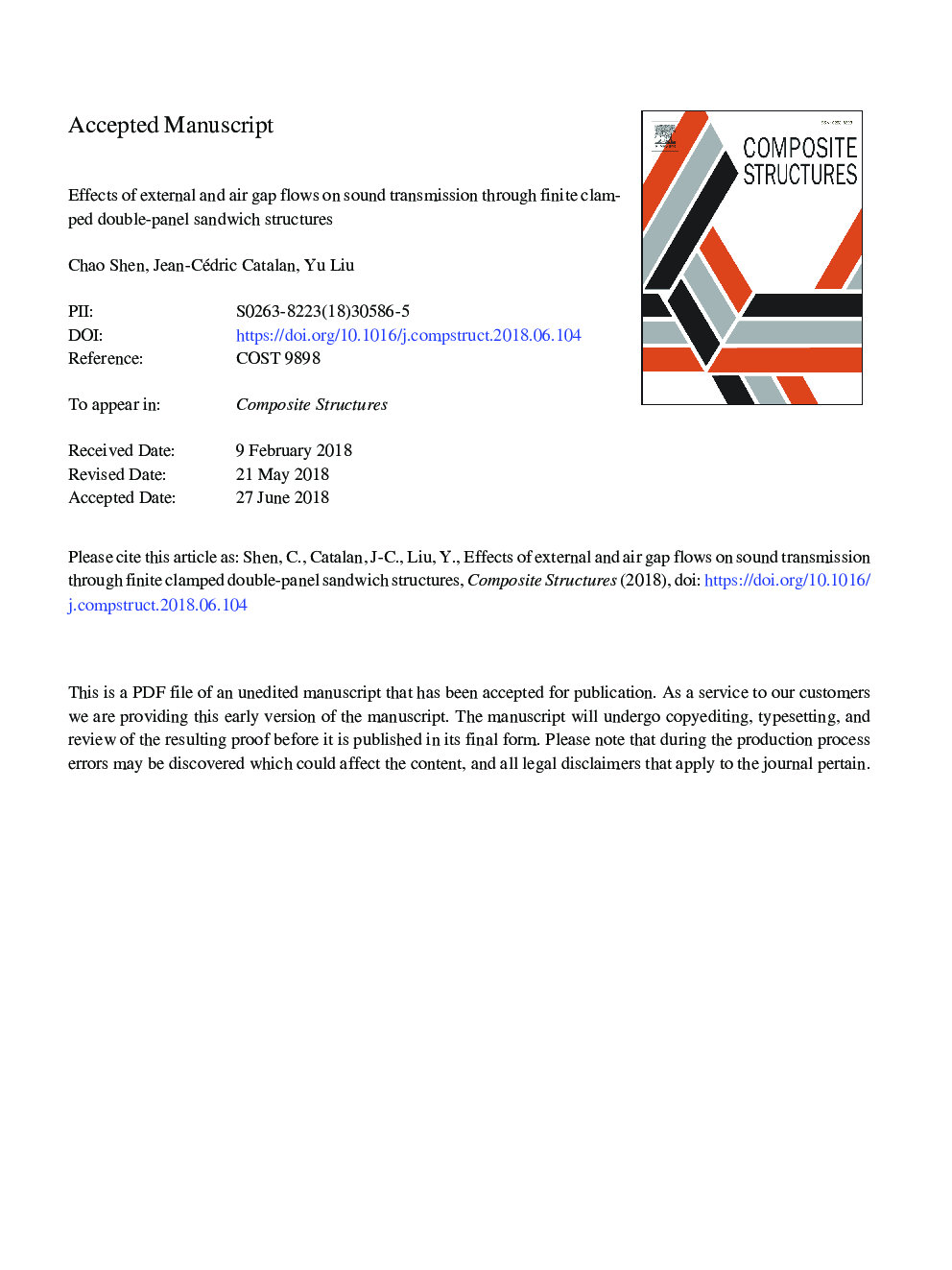| Article ID | Journal | Published Year | Pages | File Type |
|---|---|---|---|---|
| 6702664 | Composite Structures | 2018 | 37 Pages |
Abstract
In this paper, previous theories on the prediction of sound transmission loss (STL) through a finite clamped double-panel sandwich structure lined with poroelastic material are extended to address the influence of both external and air gap flows. Biot's theory is employed to describe wave propagation in poroelastic material. The clamped boundary condition along the panel edge introduces the modal superposition theory and a double Fourier series solution for the STL is obtained by employing the weighted residual (Galerkin) method. The analytical model is validated against theoretical results of a single incident wave under normal and oblique incidences. Various parameters such as flow velocity and gap flow orientations are considered. The numerical results suggest that the STL performance can be enhanced dramatically below the fundamental (1,1) resonance frequency with the increasing gap flow Mach numbers. Opposite orientation of air gap flows further improve the STL in the low-frequency range, and reduces the limiting angle of incidence which can trigger total internal reflection across the panel system. Although the air gap flows have less influence than the external flow, their noticeable effects on the STL show the potential in active/passive noise control.
Keywords
Related Topics
Physical Sciences and Engineering
Engineering
Civil and Structural Engineering
Authors
Chao Shen, Jean-Cédric Catalan, Yu Liu,
